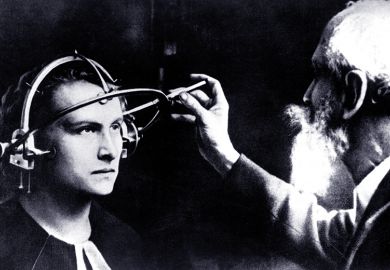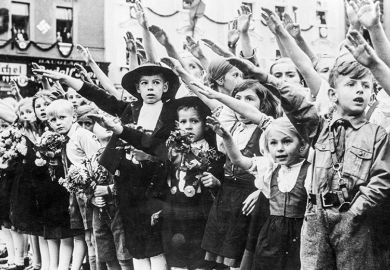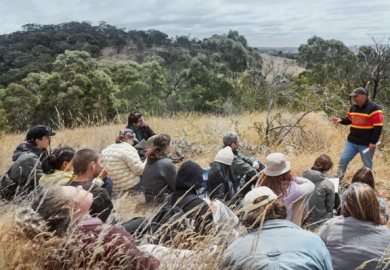This is the first biography in English of Hernando Colón. The importance of Christopher Columbus’ second, illegitimate son to and for the intellectual history of Europe derives from the defining project of his life, the attempted conquest of the expanding world of knowledge by amassing the largest library the world had ever seen.
Rightly cast by Edward Wilson-Lee as the intellectual equivalent of his father’s project, this utopian fantasy grew out of an obsessive desire to sort and categorise, order and structure the wealth of new experience flooding Europe through the explosion of the printed and written word. At a time when Europeans had become intensely aware of the extensive empty spaces of their physical and mental worlds, Colón’s heroic attempt to fill that void reminds us of the varied possibilities for organising knowledge and how very different things might have been.
He was born in Cordoba in August 1488 to a young orphan, Beatriz Enríquez de Arana, with whom his father had had a brief affair. His earliest recorded memory was of the triumphant return of Columbus from his first transatlantic crossing. It was in the shadow of this epochal achievement that Colón’s own life took shape. He was admitted in 1493 along with his older brother Diego to the household of the heir to the Spanish throne, the young Infante Juan, as a scion of the newly elevated Admiral of the Ocean Sea. Much of what we now know about his father comes from the comprehensive biography he compiled, a document shaped by court cases concerning the rights of his family in the Americas.
Colón tasted life on the open seas during Columbus’ Fourth Voyage and was shipwrecked with him on the coast of Jamaica for almost two years, saved from starvation only by his father’s successful prediction of a lunar eclipse, which they used to overawe increasingly hostile indigenous groups. His importance for the history of exploration and colonialism is equally apparent from his long-standing association with the Casa de Contratación in Seville, where he mixed with Sebastian Cabot and Amerigo Vespucci, before becoming its piloto mayor, responsible for major cartographic projects as well as the examination of ships’ navigators.
Diego’s advantageous marriage to María de Toledo, a niece of the Duke of Alba, was undermined by a liaison with two women over the winter of 1507, both of whom bore him children. One of them sued him in the ecclesiastical courts, claiming that she had been seduced under promise of marriage and therefore had a claim to the family’s titles. Wilson-Lee’s evocation of the Rome Colón would have experienced as he pursued his brother’s case at the Curia is a tour de force, taking in the prospect as pilgrims arrived, the guidebooks, options for accommodation, the site of St Peter’s dome under construction and the recent discovery of the Laocoön statue (1506). He attended the Studium Urbis, Rome’s university, and almost certainly spent time in the Medici and Vatican libraries, some of the earliest model libraries. His original mental habits are apparent from his copious notes in copies of set texts such as the subject index with more than 3,000 terms he compiled for Lucretius’ De Rerum Natura, detailing everything from lips to wagging tails.
After his return from Rome, Colón began his Description of Spain, which would run to 6,635 entries, listing population and distances of myriad places. The aim was ultimately to create a map in which everything was laid out on a grid, like a chessboard.
This is a biography that will teach its readers a huge amount about the culture, history and society of Spain and Europe in the early 16th century, as well as the origins of many of our own ideas about the age of exploration and the birth of the modern world. While it wears its erudition lightly, its strength lies in the original research that underpins it, which will be published next year, the result of a project on the library and its catalogues.
In his drive to create a universal library, Colón expanded his tastes from prestigious, classical and sacred texts to the latest ballads, pamphlets, pasquinades (satires), erotic vernacular literature and obrecillas, small, cheap works. The key problem was how to actualise this material, making it accessible and legible to someone with no prior knowledge of what it contained. Colón’s habit from about 1511 of noting how much he paid for, and where and when he bought any given volume affords us an invaluable guide to the print industry, his interests, travels and the international nature of the book trade.
The collections of ephemera – and in particular prints – set Colón’s project apart from the more general humanist impetus towards definitive editions of the great classical texts. In 1518, he began a Vocabulario, or Latin Dictionary, which would eventually stretch to 3,000 entries occupying 1,476 pages, but getting no further than the letter “B”. This went far beyond definition, gathering together language treatises of the past and examples of usages from the best authors, generating a map of how words had been used.
From Venice, Colón dispatched 1,674 books after a stay lasting fewer than nine months, including works by Luther from after his censure by the emperor at Worms. He bought 700 titles at Nuremberg in little more than a month, 200 more at Cologne in just three days and another thousand at Mainz in a month. In June 1522, he bought 80 works in London and eventually returned to Spain with 4,200 books from northern Europe. This material was tragically lost in a shipwreck, but it survives through its ghostly substitute, Colón’s Memorial de los Libros Naufragados, from which this biography takes its title, extracted from an early alphabetised catalogue of authors.
His first attempt to encompass his mental world, the Abecedarium, or list of authors and titles, was instrumental in the creation of the very notion of an “author”. As Wilson-Lee acutely points out, the problems of determining authorship were compounded by title pages that were crucial for marketing and publicity, but often not centrally concerned with the contents of the books. To address this, another catalogue was created, The Book of Epitomes, which already had 1,361 entries by 1524, compressing the contents of volumes into seven- or eight-line summaries.
As both these systems assumed that readers knew what they were looking for, another list, the Libro de Materias (Book of Materials or Subject Matters), was created as a universal index that erased the barriers between individual volumes and created a network of links across the whole collection. Finally, a Table of Authors and Sciences sought to divide the contents of the library into manageable sections, assembling things that belonged together, using 10,000 scraps of paper, which abridged vast amounts of information, decipherable at a glance, and including title, author, subject and publication details.
This early form of card catalogue could be shuffled, disassembled and reconfigured. Its complexity, however, eventually defeated its creator, with the last 5,000 volumes of the library simply arranged by language, awaiting processing. The catalogues were not intended primarily as guides to the library itself, but as navigational tools for readers all over the world. Incomplete and quixotic, Colón’s achievements were nevertheless extraordinary and unique, something this subtle retelling makes engagingly accessible for the first time.
Alexander Samson is reader in early modern studies at UCL.
The Catalogue of Shipwrecked Books: Young Columbus and the Quest for a Universal Library
By Edward Wilson-Lee
William Collins, 416pp, £25.00
ISBN 9780008146221
Published 17 May 2018
The author
Edward Wilson-Lee, fellow in English at Sidney Sussex College, Cambridge, was born in a small farming town in Ohio, to which his American father and British mother had returned after meeting in East Africa. They soon went back to Kenya, where he remained until he left for boarding school in Switzerland at the age of 12.
“My time reading English as an undergraduate at UCL”, Wilson-Lee recalled, “was a magical period, as both the variety of the metropolis and of my studies (largely focused at that stage on Anglo-Saxon and Old Norse) were worlds away from my life before in Kenya and Switzerland. I went on to do graduate work at Columbia University in New York (where I fell in love with the history of books) and at Cambridge, at which I luckily arrived just when book history was becoming a big thing.”
Although his new book might “seem very far apart in time and geographically” from his earlier Shakespeare in Swahililand: Adventures with the Ever-living Poet (2016), a travelogue about the Bard’s afterlife in Africa, Wilson-Lee regarded them as “both about voyages in search of an elusive literary ideal: the Universal Author or the Universal Library. One is about what happens when you set out with only one book (the Complete Works); the other about what happens when the number of books encountered is practically limitless.”
For those “living through the current information explosion”, Wilson-Lee believes that Hernando’s story could be “a call to arms, an appeal not to react to plenitude by closing ourselves off to all the world has to offer. The current ‘bubbles’ in which we are increasingly isolated are, in some ways, defence mechanisms against a plurality in the world which can feel threatening in its overwhelming strangeness, but which can open new vistas to us and connect us as we have never been before.”
Matthew Reisz
POSTSCRIPT:
Print headline: Mapping words between worlds
Register to continue
Why register?
- Registration is free and only takes a moment
- Once registered, you can read 3 articles a month
- Sign up for our newsletter
Subscribe
Or subscribe for unlimited access to:
- Unlimited access to news, views, insights & reviews
- Digital editions
- Digital access to THE’s university and college rankings analysis
Already registered or a current subscriber?







